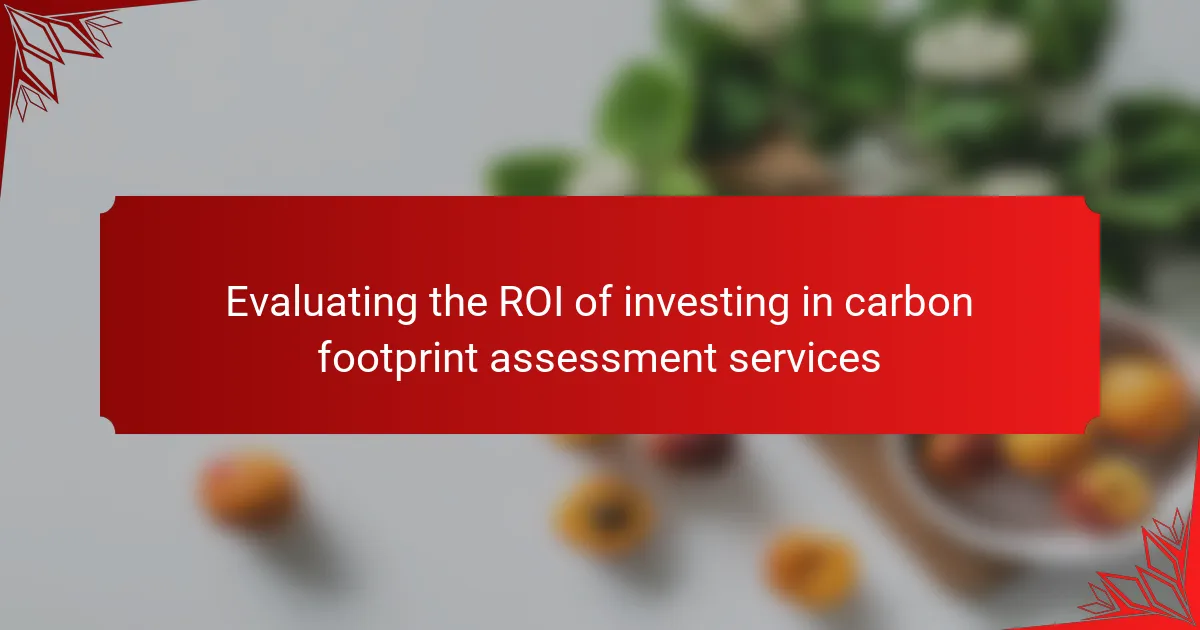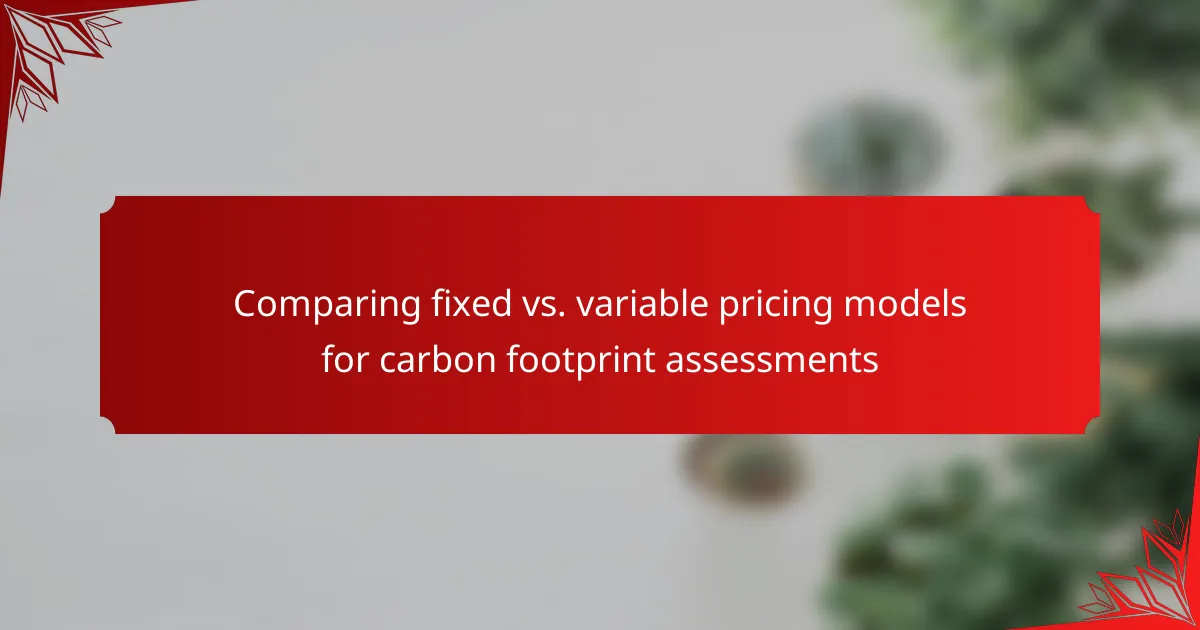Finding affordable carbon footprint assessment services in your region requires a bit of research into local consultancies, online platforms, and community programs. By understanding the factors that influence pricing and evaluating the offerings and credentials of different providers, you can identify options that align with your budget and assessment needs.
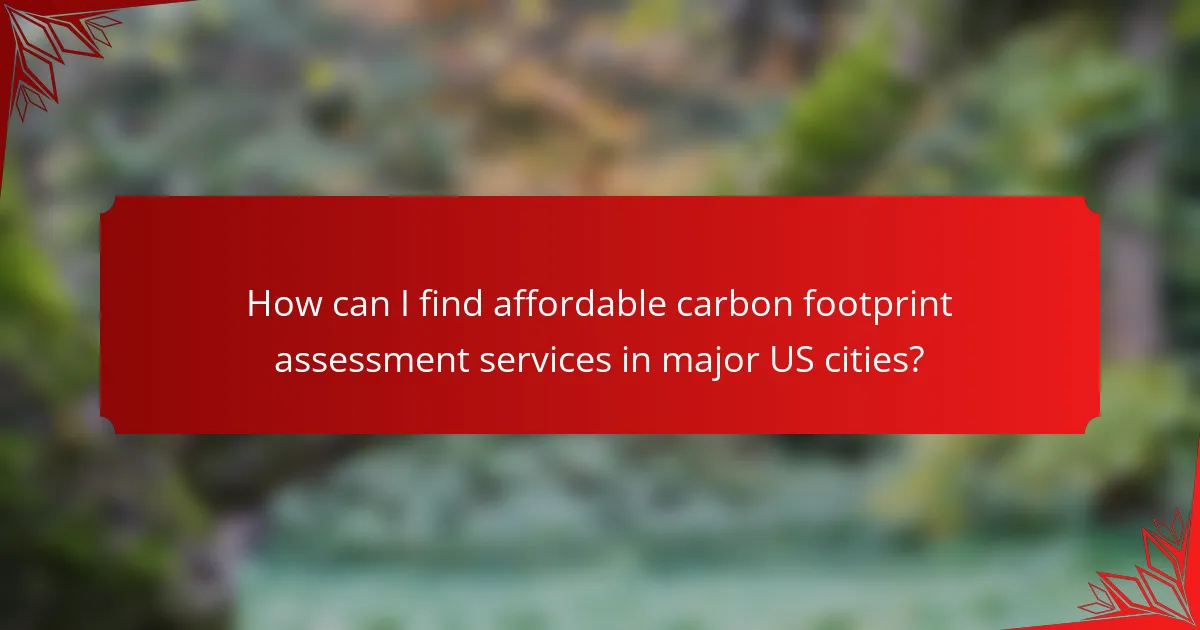
How can I find affordable carbon footprint assessment services in major US cities?
To find affordable carbon footprint assessment services in major US cities, start by researching local consultancies, online platforms, and community programs. These options can vary in cost and depth of service, allowing you to choose one that fits your budget and needs.
Local environmental consultancies
Local environmental consultancies often provide tailored carbon footprint assessments based on regional factors. They typically charge between a few hundred to a couple of thousand dollars, depending on the complexity of your needs and the size of your organization.
When selecting a consultancy, check their credentials and past client reviews. Look for firms that have experience with similar projects and can demonstrate a solid understanding of local regulations and sustainability practices.
Online platforms for assessments
Online platforms offer a cost-effective way to assess your carbon footprint, with services ranging from free calculators to comprehensive paid assessments. Many platforms charge between $50 to $300 for detailed reports, making them accessible for individuals and small businesses.
These platforms often use standardized methodologies, which can be beneficial for consistency. However, ensure that the platform you choose is reputable and provides clear guidance on how to interpret the results.
Community-based programs
Community-based programs frequently offer free or low-cost carbon footprint assessments as part of local sustainability initiatives. These programs may be funded by local governments or non-profit organizations aiming to promote environmental awareness.
Participating in these programs can not only save you money but also connect you with local resources and networks focused on sustainability. Check with your city’s environmental department or local NGOs for available programs and eligibility criteria.

What factors affect the cost of carbon footprint assessments?
The cost of carbon footprint assessments can vary significantly based on several key factors, including the expertise of the service provider, the scope and depth of the assessment, and the geographic location of the service. Understanding these factors can help you find affordable options that meet your needs.
Service provider expertise
The expertise of the service provider plays a crucial role in determining the cost of carbon footprint assessments. Highly experienced consultants or firms with specialized knowledge may charge more due to their advanced skills and proven methodologies. However, less experienced providers might offer lower rates, which can be beneficial for smaller projects or organizations with limited budgets.
When selecting a provider, consider their certifications and past projects. Look for providers who have experience in your specific industry, as they may offer more tailored and effective assessments.
Assessment scope and depth
The scope and depth of the carbon footprint assessment significantly influence its cost. A comprehensive assessment that includes detailed data collection, analysis, and reporting will typically be more expensive than a basic assessment that provides a high-level overview. Factors such as the number of emissions sources evaluated and the complexity of the data required can also affect pricing.
To manage costs, define your goals clearly. If you only need a preliminary assessment, opt for a simpler package. For more in-depth analysis, be prepared for higher fees, but ensure the added detail aligns with your sustainability objectives.
Geographic location
Your geographic location can impact the cost of carbon footprint assessments due to variations in local market rates and the availability of qualified service providers. In urban areas or regions with a strong focus on sustainability, prices may be higher due to increased demand for these services.
Additionally, consider any local regulations or incentives that may affect pricing. For example, some regions may offer subsidies for businesses undertaking carbon assessments, potentially lowering your overall costs. Research local providers to find competitive rates that suit your budget while ensuring quality service.

How do I choose the right carbon footprint assessment service?
To choose the right carbon footprint assessment service, consider their specific offerings, client feedback, and professional credentials. This ensures you select a service that meets your needs while providing reliable and accurate assessments.
Compare service offerings
Start by examining the range of services each provider offers. Some companies may focus on specific sectors, such as residential, commercial, or industrial assessments, while others might provide comprehensive packages that include carbon offset solutions.
Look for services that align with your goals. For instance, if you need a detailed analysis, choose a provider that offers in-depth reporting and actionable insights. Create a comparison chart to evaluate features such as pricing, turnaround time, and additional services like sustainability consulting.
Check client reviews and testimonials
Client reviews and testimonials can provide valuable insights into the quality and reliability of a carbon footprint assessment service. Look for feedback on platforms like Google, Yelp, or industry-specific forums to gauge customer satisfaction.
Pay attention to recurring themes in the reviews, such as responsiveness, accuracy, and the overall experience. A service with consistently positive feedback is more likely to deliver a satisfactory assessment.
Evaluate certification and credentials
Ensure the assessment service holds relevant certifications and credentials that demonstrate their expertise in carbon footprint analysis. Look for affiliations with recognized organizations, such as the Greenhouse Gas Protocol or ISO standards related to environmental management.
Certifications can indicate a commitment to best practices and adherence to industry standards. This can enhance the credibility of the assessment and provide assurance that the service is knowledgeable about current regulations and methodologies.
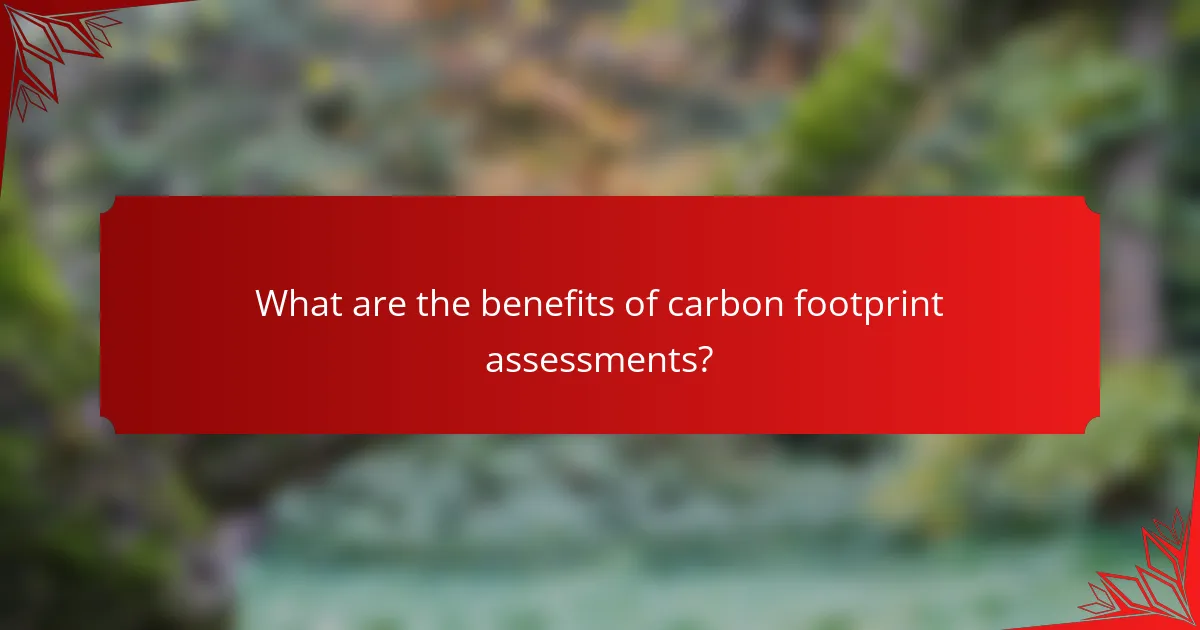
What are the benefits of carbon footprint assessments?
Carbon footprint assessments provide valuable insights into the environmental impact of an organization or individual by measuring greenhouse gas emissions. These assessments help identify areas for improvement, enhance sustainability efforts, and ensure compliance with relevant regulations.
Identifying reduction opportunities
Carbon footprint assessments reveal specific sources of emissions, allowing organizations to pinpoint reduction opportunities. For instance, a business may discover that transportation is a significant contributor to its carbon output, prompting a shift to more sustainable logistics options.
By analyzing energy consumption patterns, companies can implement energy-efficient practices, such as upgrading to LED lighting or optimizing heating and cooling systems. This targeted approach can lead to substantial cost savings and reduced environmental impact.
Enhancing sustainability efforts
Conducting a carbon footprint assessment strengthens sustainability initiatives by providing a clear baseline for measuring progress. Organizations can set realistic goals based on their current emissions, making it easier to track improvements over time.
Incorporating assessment findings into corporate social responsibility (CSR) strategies can enhance brand reputation and attract environmentally conscious consumers. For example, businesses that publicly commit to reducing their carbon footprint may experience increased customer loyalty and market competitiveness.
Meeting regulatory requirements
Many regions have established regulations aimed at reducing greenhouse gas emissions, making carbon footprint assessments essential for compliance. Organizations may be required to report their emissions and demonstrate efforts to minimize them, depending on local laws.
Understanding these requirements helps businesses avoid potential fines and maintain good standing with regulatory bodies. Engaging in regular assessments not only ensures compliance but also positions organizations as leaders in sustainability within their industries.
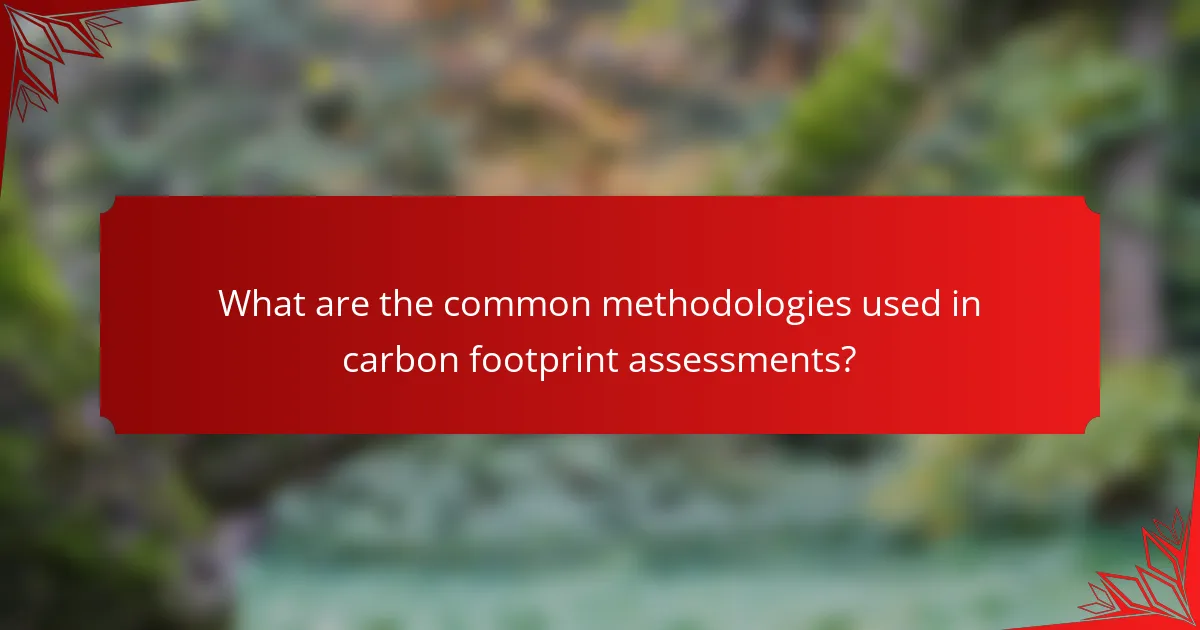
What are the common methodologies used in carbon footprint assessments?
Common methodologies for carbon footprint assessments include Life Cycle Assessment (LCA), the Greenhouse Gas Protocol, and ISO 14064 standards. Each method provides a structured approach to measuring and managing greenhouse gas emissions across various activities and products.
Life Cycle Assessment (LCA)
Life Cycle Assessment (LCA) evaluates the environmental impact of a product or service throughout its entire life cycle, from raw material extraction to disposal. This method helps identify stages where emissions can be reduced, guiding companies toward more sustainable practices.
When conducting an LCA, consider the four phases: goal and scope definition, inventory analysis, impact assessment, and interpretation. This structured approach ensures comprehensive evaluation and can reveal significant opportunities for emission reductions.
Greenhouse Gas Protocol
The Greenhouse Gas Protocol provides a standardized framework for measuring and managing greenhouse gas emissions. It categorizes emissions into three scopes: Scope 1 (direct emissions), Scope 2 (indirect emissions from energy), and Scope 3 (other indirect emissions), allowing organizations to understand their total carbon footprint.
Using the Greenhouse Gas Protocol helps businesses identify key emission sources and prioritize reduction efforts. It is widely recognized and can be integrated into corporate sustainability strategies, making it a practical choice for organizations aiming to improve their environmental performance.
ISO 14064 standards
ISO 14064 standards offer guidelines for quantifying and reporting greenhouse gas emissions and removals. These standards are applicable to organizations and projects, providing a consistent approach for measuring emissions and ensuring transparency in reporting.
Implementing ISO 14064 can enhance credibility and stakeholder trust, as it aligns with international best practices. Organizations should consider obtaining third-party verification to strengthen their carbon footprint assessments and demonstrate commitment to sustainability.


